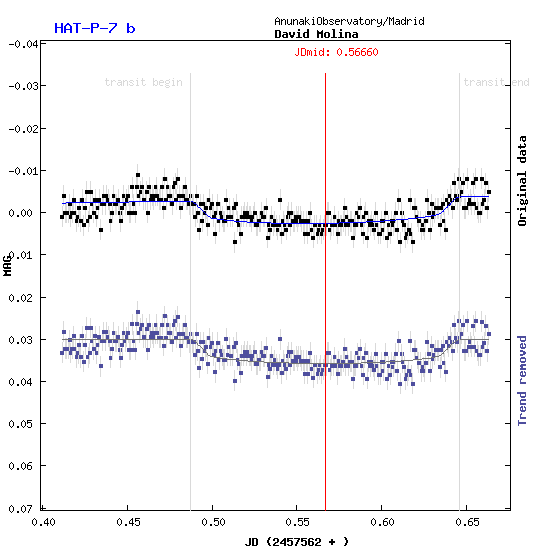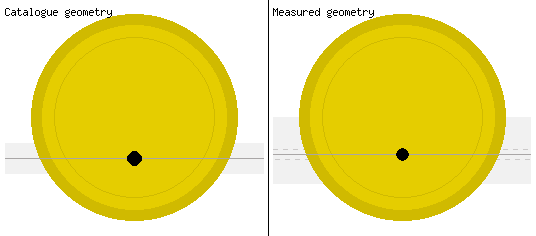HAT-P-7b (or Kepler-2b) is an extrasolar planet discovered in 2008. It orbits very close to its host star, and is both larger and more massive than Jupiter. Due to the extreme heat it receives from its star, the day-side temperature is predicted to be 2730+150−100 K. HAT-P-7b is also one of the darkest planets ever observed, with an albedo of less than 0.03, meaning it absorbs more than 97% of the visible light that hits it.
The GSC 03547-01402 system was within the initial field of view of the Kepler spacecraft,2 which confirmed the orbital properties and transit of the planet with significantly improved confidence and observed occultation and light curve characteristics consistent with a strongly absorbent atmosphere with limited advection to the night side. By testing itself on HAT-P-7b, Kepler showed that it was sensitive enough to detect Earth-like exoplanets.3
In August 2009, it was announced that HAT-P-7b could have a retrograde orbit, based on measurements of the Rossiter-McLaughlin effect.4 5 6 This announcement came just one day after the announcement of the first planet discovered with such an orbit, WASP-17b.
In January 2010, it was announced that ellipsoidal light variations were detected for HAT-P-7b, the first detection of its kind. This method analyzes the brightness variation caused by a star’s rotation as its shape distorted by the planet.7
On July 4, 2011, HAT-P-7b was the subject of the Hubble Space Telescope’s one millionth scientific observation.
https://arxiv.org/abs/0803.0746







